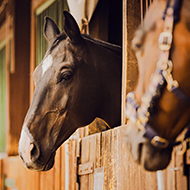Temporal lobe in humans and dogs plays important role in social communication.
A new study by the University of Vienna and the University of Veterinary Medicine Vienna has revealed that dog and human brains process information from body postures in a similar way. The findings confirm that the temporal lobe plays an important role in social communication and offer new insights into how dogs and humans perceive each other and their environment.
The researchers found that both humans and dogs have a brain region in the temporal lobe that is specialised in the visual perception of body postures.
They also found that when dogs look at faces and bodies there are also differences in activation in areas responsible for processing smells. In humans, it was only the visual brain regions that were affected.
For the study, fifteen awake and unrestrained pet dogs and 40 human participants underwent functional magnetic resonance imaging (fMRI) while viewing images of human and dog bodies, faces, and inanimate objects. During two five minute periods, participants saw 180 different images.
The research group is one of only four in the world undertaking MRI studies with pet dogs. Training methods were developed to get the dogs used to the MRI environment gradually. The dogs were not sedated and could leave the MRI at any time.
Magdalena Boch, co-author of the study, said: "We humans often focus on the face when communicating with others. Our results suggest that faces are also an important source of information for dogs. However, body postures and holistic perception seem to play a superior role."
The results showed that the socialised brain regions were equally active in dogs when looking at pictures of other dogs or humans, which researchers say highlights the close bond between dogs and humans.
Ludwig Huber, co-author of the study, said: "Dogs and humans may not be closely related, but they have been close companions for thousands of years. Therefore, comparing dogs and humans also gives us new insights into the so-called convergent evolution of social perception and information processing processes."
The study has been published in the journal Communications Biology.



 Zoetis has launched a new survey to identify management techniques for Equine Herpes Virus (EHV).
Zoetis has launched a new survey to identify management techniques for Equine Herpes Virus (EHV).